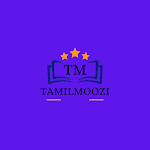• India is the seventh largest country in the
world and second largest country in Asia.
• India accounts for about 2.4 % of the total
area of the world with an area of
32,87,263 sq.km.
India shares its 15,200 km long land
frontier with
Pakistan and Afghanistan in the north-west,
China, Nepal and Bhutan in the north
Bangladesh and Myanmar in the east.
• India’s longest border is with Bangladesh (4156 km)while the
shortest border is with Afghanistan.(106 km)
• About 6,100 km long coastline of India.
• The total length of the coastline of India including the islands
is 7,516.6 km.
• India and Sri Lanka are separated by a narrow and shallow sea
called Palk Strait.
• Three sides surrounded by the waterbodies namely Indian
ocean in the south, Arabian sea in the west and Bay of Bengal
in the east.
India: A Subcontinent
• India along with the countries of
Myanmar, Bangladesh, Pakistan, Nepal,
Bhutan and Sri Lanka is called a
subcontinent.
• This region possesses a distinct
continental characteristics in
physiography, climate, natural vegetation,
minerals, human resources etc. Hence
India is known as ‘subcontinent’.
Location and Extent
• India extends from 8°4'N to 37°6'N
latitudes and 68°7'E to 97°25'E longitudes.
• Hence India is located in the northeastern
hemisphere
• The southern most point of the country is Pygmalion Point or
Indira Point (6°45'N latitude) located in the Andaman and
Nicobar Islands.
• The southern most point of mainland of India is Cape
Comorin (Kanyakumari). The northern point is Indira Col.
• The north-south extent of India is 3,214 km.
• The east-west extension is 2933 km.
• The Tropic of Cancer (23°30’ N) passes through the middle of
the country dividing it into two halves as northern temperate
and southern tropical lands.
Indian Standard Time (IST)
• The longitudinal difference between Gujarat in the
west and Arunachal Pradesh in the east is a bout 30°.
• Since Arunachal Pradesh is towards east, it will have
sunrise about two hours earlier than the sunrise at
Gujarat which is in the west.
• In order to avoid these differences, Indian standard
time is calculated.
• The local time of the central meridian of India is the
standard time of India.
• India’s central meridian is 82°30’ E longitude. It
passes through Mirzapur and roughly bisects the
country in terms of longitude.
• The IST is 5.30 hrs ahead of Greenwich Mean Time
(GMT).
Major Physiographic Divisions of India
There is a varied nature of physiographic divisions in India. ,
It is divided into the following five physiographic divisions:
1. The Northern Mountains
2. The Northern Plains
3. The Peninsular plateau
4. The Coastal Plains
5. The Islands
The Northern Mountains
• It was formed only few millions years ago and formed by the folding
of the earth crust due to tectonic activity.
• It stretches for a distance of 2,500 km
• The width of the Northern Mountains varies from 500 km
• The Pamir Knot, popularly known as the “Roof of the World” is the
connecting link between the Himalayas and the high ranges of Central
Asia.
• From the Pamir, Himalayas extend eastward in the form of an arc
shape.
• The term “Himalaya” is derived from Sanskrit. It means “The Abode of
Snow”.
X STD |SOCIAL|GEOGRAPHY |UNIT 1 | India -Location,Relief and Drainage|EM|PPT






0 கருத்துகள்